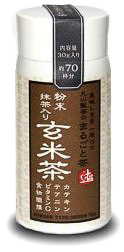Tea came to Japan from China for the first time during the 6th century and initially it was imported in brick-form for aristocrats and the clergy. Tea was considered a luxury item in Japan at that time as exports from China were scarce. According to ancient recordings the first tea seeds were brought to Japan around the 9th century by Buddhist monks known as Saicho and Kukai who travelled and studied in China. From this moment on tea cultivation in Japan started developing and tea was gradually becoming more and more popular.
In 1191 Eisai (also known as Yosai), a Zen Buddhism priest, has brought tea seeds to Kyoto and given them to the priest Myoe Shonin to plant near a temple located there. Eisai is the author of the oldest tea book in Japanese, Kissa Yoyoki (Drinking Tea for Health), in which he proclaims tea to be a ‘divine remedy and a supreme gift of heaven’. He taught people how to grind leaves into powder to produce a better tasting beverage and successfully introduced tea to the samurai class. Prior to that tea was mainly used as a stimulant to keep monks awake during meditation, but now it has found appeal among common people.
During the 13th and 14th century tea has become an art form and a vital element of passing time for people. As a result of the interest surrounding tea it became the subject of a game called Tocha, which originated during Sung Dynasty in China. People gathered to test their ability to distinguish between tea types and their origins. The game involved trying different kinds of tea and guessing where the tea come from – correct guesses were rewarded with prizes. The game was banned at the end of Japan’s Civil War, but later transformed into what we know as Chanoyu – the Japanese Tea Ceremony. At this time the tea steaming technique known to the Japanese since the 9th century was replaced by a roasting technique introduced by China.
In the 15th century tea became a significant part of culture in Japan and it has a solid place in history as one of the country’s symbols since. At this point Japan took a different path from China towards developing their own ‘tea ways‘. In the spirit of simplicity and beauty of everyday things (then valued aesthetics) a tea ceremony started taking shape, thanks to the influential figure of a tea scholar, Sen Rikyu. By the end of 16th century the ‘Way of Tea’ (Chanoyu) was established and its tradition was carried on into modern day. Chanoyu celebrates the beauty of every day objects, imperfection, asymmetry and naturalism. Along with the ceremony there was a need for a special kind of architecture that would suit its style, and so the building of tea houses originated.
In 1740 a new way of processing was developed by Soen Nagatani, which replaced the Chinese roasting method. It involved steam-drying tea leaves and unlike then available Matcha (ground tea) and Houjicha (roasted tea) it produced in a whole new type of tea. This method also referred to as the Uji method resulted in the creation of Sencha and most other teas now characteristic to Japan.
Due to the demand, tea couldn’t be produced only by hand in small quantities and during the 18th and 19th century machines were developed to boost the production process. The machines took over the tasks of drying, rolling and steaming tea leaves. With today’s automation and computerized machines tea quality can be retained at a high level.



